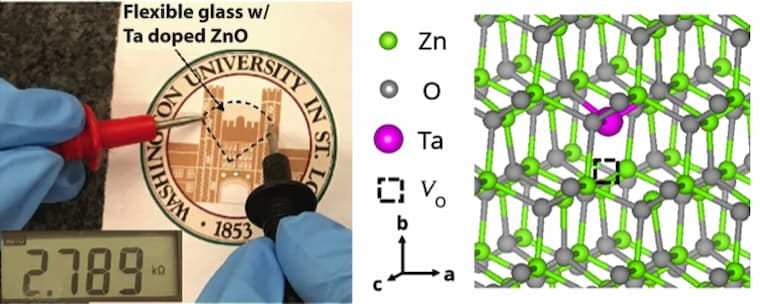21. Doping mechanism in tantalum doped ZnO films
Z. Gao, Y. Myung, X. Huang, R. Kanjolia, J. Park, R. Mishra, P. Banerjee, Adv. Mater. Interfaces 3, 1600496 (2016).

Doping mechanism in transparent, conducting tantalum doped ZnO films deposited using atomic layer deposition.
Z. Gao, Y. Myung, X. Huang, R. Kanjolia, J. Park, R. Mishra, P. Banerjee, Adv. Mater. Interfaces 3, 1600496 (2016).
The effect of tantalum (Ta) addition to ZnO films has been investigated. The films are synthesized using atomic layer deposition. The precursor for Ta is pentakis-dimethylamino Ta (PDMAT) whereas, diethyl Zn (DEZ) is used for ZnO deposition with H2O as an oxidant. The surface reactions are studied using in situ downstream quadrupole mass spectrometry. X-ray photoelectron spectroscopy and photoluminescence show that at low Ta doping, oxygen vacancies are eliminated from the film, whereas at higher Ta doping, Zn vacancies are formed. These observations are supported by density functional theory calculations. Hall measurements show the lowest resistivity for a 30 nm Ta doped ZnO film to be 4 × 10−3 Ω cm with a peak carrier concentration of 1.2 × 1020 cm−3. The ideal cycle ratio used to achieve these properties is 40:1 of (DEZ+H2O):(PDMAT+H2O) pulses. Optical measurements show an average transmittance of 85% in the visible regime. The efficiency of Ta doping the ZnO, which represents the fraction of Ta5+contributing to conductivity, is found to be at least 6.3%.